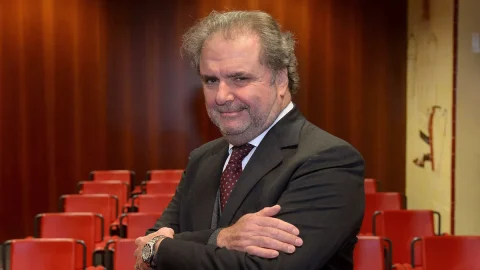Italy is Argentina's third largest European trading partner after Germany and Spain. In 2016, Italian exports to the country increased by 8,8%, reaching around 1,16 billion euros, with the mechanical engineering sector which alone accounts for around 50% of the share of Italian exports to the country. The numbers are contained in a report by Sace, which today, together with Simest, is taking part in a systemic mission to the South American country. Representing the two companies of the CDP Group united in the export and internationalization pole will be Alessandro Decio, CEO of Sace.
According to the forecasts contained in the report, Italian exports to Argentina will grow by an average of 4,5% per year in the 2017-19 period, with +3,2% for 2017 alone. Among the main export and opportunity sectors for Italian companies include instrumental mechanics (engines and turbines, handling and lifting machines, machines for the food industry), electrical appliances and means of transport.
INFRASTRUCTURE
Over the past 10 years, the country has not invested adequately in infrastructure development. For this reason, the new government has planned investments of 16 billion dollars, to be allocated to 10 underdeveloped provinces in the north of the country, to build new housing units, kindergartens and nursery schools, new roads, renovate regional airports and restructure the railway line Belgrano.
TRANSPORTATION
The government intends to invest 33 billion dollars over the next four years, with the aim of improving the sector's infrastructure. About $8,5 billion of funds for the plan are expected to come from the private sector, and the transportation strategy will focus on a few priority projects. Among these: strengthening of freight transport by train and improvement of access to ports, expansion of the road network through the construction of approximately 2800 km of highways (currently there are construction sites open for 1100 km), integration of the road network with Chile in order to have access to Pacific ports, introduce Metrobus networks in some provinces and enhance air transport and related infrastructure. Airports. More than 22 billion pesos (about 1,5 billion dollars) will be invested in the modernization of 19 airports across the country. The main works envisaged include the enlargement of car parks and terminals, the restructuring of commercial centers and services, new control towers, parking platforms and works on the runways to increase safety and aircraft maneuvering areas.
ENERGY AREA
Historically, the country is a producer of natural gas, potentially able to satisfy its own demand and also - partially - the needs of neighboring countries (Chile, Brazil, Uruguay). More than half of natural gas production comes from the Neuquén basin, in whose province important deposits of shale gas, tight sand gas and shale oil have also recently been discovered. The discovery places Argentina in third place in the world for endowment of unconventional hydrocarbons, after China and the United States.
Among the government's objectives is to reach 8% of energy generation from renewable sources by December 2017 and 20% by December 2025. The country has recently passed a new law that promotes and regulates these sources (solar, wind, biomass and mini-hydro). The World Bank has approved approximately $480 million to support and promote private investment in the sector. In 2016 the "RenovAr" program was approved which saw the awarding of 59 projects. These projects will generate approximately 2423 MW and will be implemented in different areas of the country.
AGRIBUSINESS
There is potential for investment in agricultural machinery used in horticulture and fruit growing and in technologies related to the wine and olive growing sector, as well as in machinery related to processing and packaging. In 2016, all agricultural machinery sectors recorded positive performances in Argentina: seeders (80%), combines (54%), tractors (25%) and various tools (16%). The agri-food sector is the most representative sector of Argentine productive activity. The Government has recently eliminated export duties on agricultural goods, livestock and fish products. Argentina holds, respectively, the eighth and seventh place in the world in the production and export of food products; it is the world leader in the export of soybean and sunflower oil and flour, horsemeat, honey, pears, concentrated lemon and grape juice and yerba mate (for infusion); holds second place for corn and apple juice and is among the top world producers-exporters of cereals in general, beef, wine, legumes, fish.
EXTRACTIVE
There are important opportunities for Italian companies in related industries in the mining sector. Indeed, Argentina holds the sixth place in the world for the availability of mineral resources. The country has a potential for mining development in almost the entire territory, although the most promising regions are those close to the Andes mountain range. In the country there are deposits of gold, copper, silver, zinc, lead, lithium, nickel, clay, marble, quartz, aluminum, magnesium and cobalt. The Government has recently launched a plan for the substitution of imports of equipment and components for the mining industry which provides for subsidies and incentives for investments in the sector.
AUTOMOTIVE
Argentina is the third largest automaker in Latin America behind Mexico and Brazil. The automotive supply chain represents about 9% of the country's industrial production. The main activity in this sector consists in the development of production thanks to the investments of companies such as Fiat, Ford, Iveco, Mercedes Benz, PSA Peugeot-Citroen, Renault, Toyota, Volkswagen. There is strong interest in investing in new technologies for components and spare parts. The market for trucks and motorcycles is also growing.





